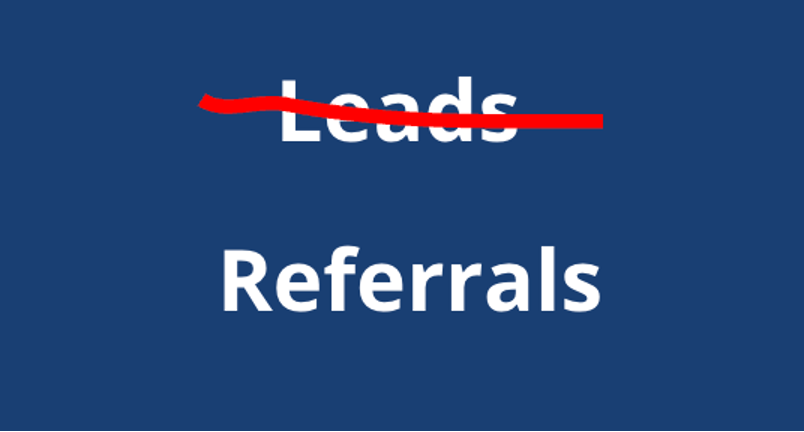- About
ABOUT US
- Membership
Membership
Discount Programs
Awards Programs
- Events
- Services & Resources
Construction Career Outreach
Legislative Advocacy
- Education & Apprenticeship
Apprenticeship
- News
ABC Wisconsin News
- Contact Us
ABOUT US
Membership
Discount Programs
Awards Programs
Construction Career Outreach
Legislative Advocacy
Apprenticeship
ABC Wisconsin News
By Greg Mischio, Winbound
I used to work for a sales manager that used a pretty extreme tactic to get his salespeople to make cold calls:
He would actually tape your hand to the phone to get you to make more calls.
It was one of my first jobs, and I had been hired as the marketing director for a mortgage broker that relied entirely on their 100% commission-based sales team to generate new business. The sales team would cold-call people and try to refinance their mortgages.
I had little or no budget, and I knew the fastest way to generate results was to support the sales team. To understand what they did, I decided to try cold-calling new prospects myself and learn the process.
It was all about “smiling and dialing.” So, if you weren’t dialing, the sales manager would threaten to tape your hand to the phone until you started.
Now the threat was a bit of a joke — if he did tape someone’s hand, it was to add some levity to the situation — but the message was clear:
You had to dial for your dinner. And I hated it.

The most successful salespeople don’t cold call
I had to call people between 5:00 and 7:00 pm — right when they were eating dinner.
I estimate 99% of the time I got hung up on or cursed out. The typical reaction was, “Why don’t you people leave us alone?” Yes, I had sadly become one of “you people.”
I thought there had to be a better way. And for the truly successful salespeople, there is.
The best salespeople don’t rely on cold calling to drive business. They rely on referrals.
They build their professional network. They partner with people in adjacent businesses. They help other professionals connect with one another. Meanwhile, as the networks of these exceptional salespeople grow exponentially larger so, too, do their sales pipelines and commission checks.
If you want to become one of these salespeople, there’s never been a better time. You can now combine the proven method of lead-generation described above with the 21st century’s most robust networking tool: the social media network LinkedIn.
LinkedIn is not for spamming — it’s for connecting
This is an article about how to use LinkedIn to improve your sales prospecting, but you’ve probably noticed we’re almost halfway through and I haven’t talked much about tactics or the LinkedIn tool itself.
That’s because the key to becoming successful on the network is to have the correct mindset.
If you start to use LinkedIn like a cold caller would, you will run into the same type of misery that I experienced back in the days when I was interrupting people’s dinners.
Today’s LinkedIn cold callers will send bogus connections and spammy InMail’s, all in an attempt to get leads. It’s a numbers game, and their sales pipeline is entirely dependent on activity.
That’s the wrong mindset to have if you’re using LinkedIn, and it will destroy potential sales because prospects will see you as nothing more than an annoying spammer. The key to stop thinking about LinkedIn as a tool for immediate leads, and start thinking about it as a tool to help you build referrals.
How sales can build that referral network (even if you don’t create content)
The referral mindset is a starting point for using LinkedIn the correct way. But even if you have the correct mindset, most salespeople still won’t use the social network. Why?
It’s because salespeople believe that the only way to be successful on LinkedIn is to post a bunch of content. And salespeople aren’t content creators.
Marketing people are typically the people who excel at mass messaging. Salespeople excel at interpersonal relationships. They don’t like to write, and/or feel a bit insecure about creating their own videos (although younger generations definitely aren’t as camera shy).
So, they don’t do anything. They just join the 90% of the people who just lurk on LinkedIn — scrolling endlessly through the feed.

Salespeople may not be content creators, but they can definitely do one thing: They can make comments.
If you’re a salesperson, you have expertise and insights on your products, services, and industry. And no one knows customers better than you do. You work with them every day. You have a strong point of view. You have opinions. You have INSIGHTS. And that’s why people are on LinkedIn. They want to gain insights not only from the videos and articles they see on the platform, but also from the people who are reacting to them.
So, join the crowd: Start leaving comments on other people’s posts.
Every day, I spend at least a half-hour on LinkedIn, commenting on other people’s content. And my comments aren’t just clicking the Like button, or leaving a statement like, “Great post!” I’ll build on what they’ve said and add my own unique insights.
But that’s just the first step. Now you’ve got the opportunity to start building that referral network.
PRO TIP: For this tactic to work, you need to find posts where there are tons of comments. Look for the influencers in your field who post a lot of content. Leaving comments on their posts is a win-win situation for you and the influencer. It gets them more engagement, which helps their post, and it gives you access to their followers.
You’ve left your comment and now you’re part of the conversation. You immediately have a warm intro to the other people who have left comments on the posts. So now you can reach out to them and make a connection.
Read through other people’s comments after you’ve left your own and look for potential referral sources. For example, we are a digital marketing agency that works with sales-driven manufacturing companies, so I’m always looking for sales leaders as potential referral sources.
Identify your own referral sources and look for their comments on LinkedIn. Comment on their comments.
After you’ve made your comment, go to their profile and invite them to join your network. You can reference the post you just commented on; you have something in common.
PRO TIP: DO NOT just send an invite to connect, especially from your phone. Connect via your desktop interface on LinkedIn because this gives you the opportunity to leave a short message when you send the connection. In that message, refer to the comments you both made on the post as a memory-jogger.
If your referral source has accepted the connection request, don’t stop there. Take it to the next level and set up a Zoom call or, even better, meet face-to-face.
That meeting will be a great opportunity for you to learn more about one another’s businesses, but your goal isn’t to get a referral during your first get-together. It’s to provide your referral source with value. And there’s no better way to do this than by helping someone.
I try to find three ways to help a potential referral source. You can do this by:
There really is no limit to how you can help someone, so be creative. Be a go-giver, and they’ll want to return the favor.
PRO TIP: You can add your referral sources to Sales Navigator and set alerts for whenever they are posting on LinkedIn. Then you can jump in and leave comments on their posts to continue paying it forward.
This sounds so obvious, but you’re never going to get a referral if you don’t ask. After I’ve been a go-giver and helped out someone, I make sure to ask if they know anyone who might benefit from my services. I clearly identify the type of customer we help, and I also provide them with a link to our Approach and Pricing page.
This does two things:
You can’t forget this step. Most people don’t get referrals simply because they don’t ask. So build it into your process.
Take it to the next level: Integrate with marketing
Commenting, connecting, and conversing with referral sources is a simple but effective way to build up your connections and extend your list of potential clients.
And if you really want to ramp up your approach, integrate your referral-based approach with your marketing team. Those mass communicators should be able to support you in multiple ways:
Not only will this integrated approach generate more business for you; it will also enhance your value in the eyes of the organization. And more value equals more dollars on your paycheck, right?
I’ve used the referral-based approach to build my own business, and I see it work for others on the LinkedIn network every day. I highly recommend it not only for the quality of leads you can generate but also for the quality of life you’ll lead. But if you prefer the cold calling method, I have a sales manager and a roll of tape that could help you there as well …
Greg Mischio is the Founder and CEO of Winbound. Winbound is a digital sales and marketing agency that helps sales and marketing teams use content to create a “Digital Twin” of their sales team. The approach includes collaborating with clients to produce sales-driven content, then using marketing to distribute the content to prospects. He can be reached at 608-445-0683 or on LinkedIn, of course.
© ABC of Wisconsin | All Rights Reserved | Lion Tree Group Site Design | Privacy Policy